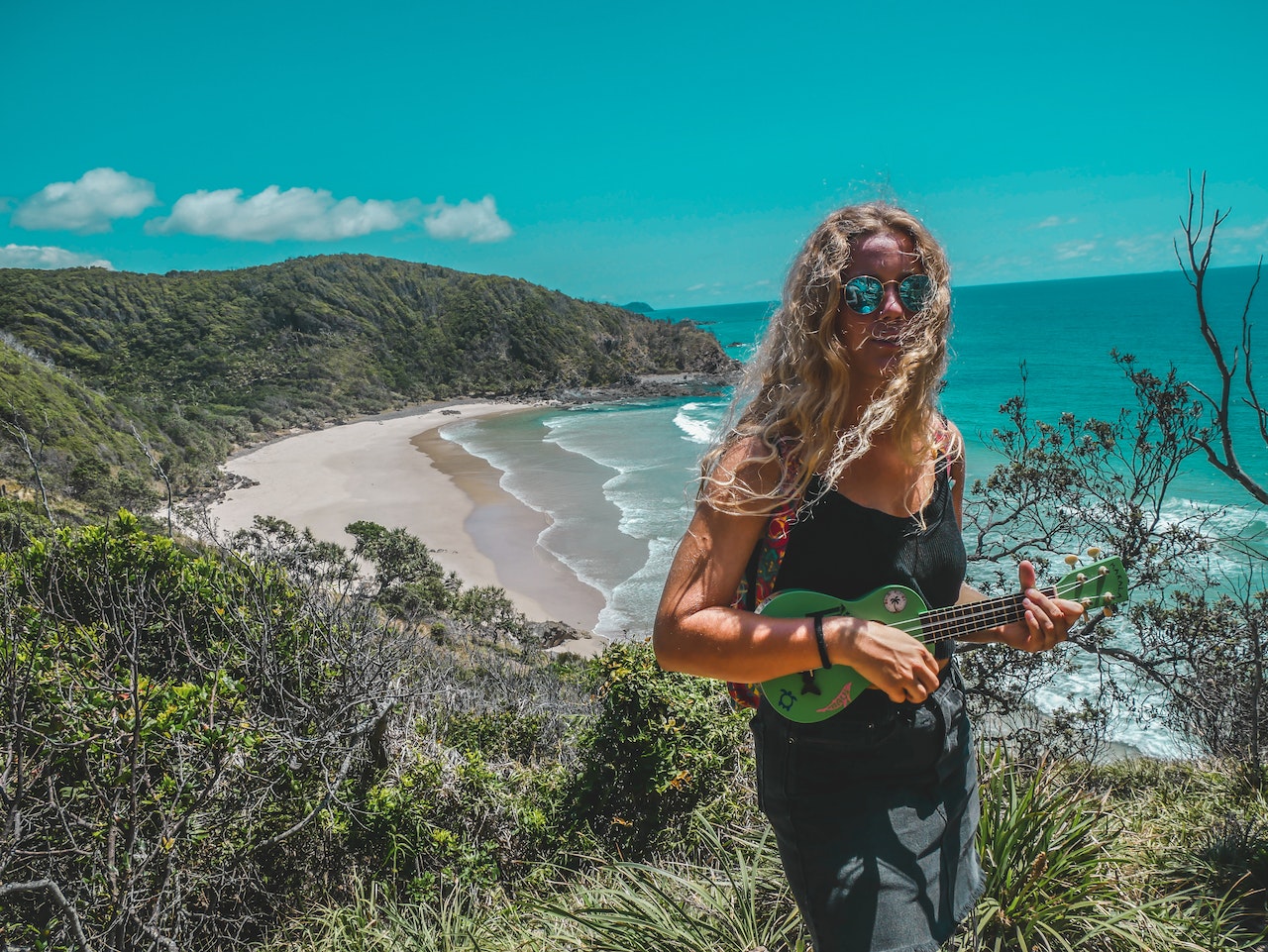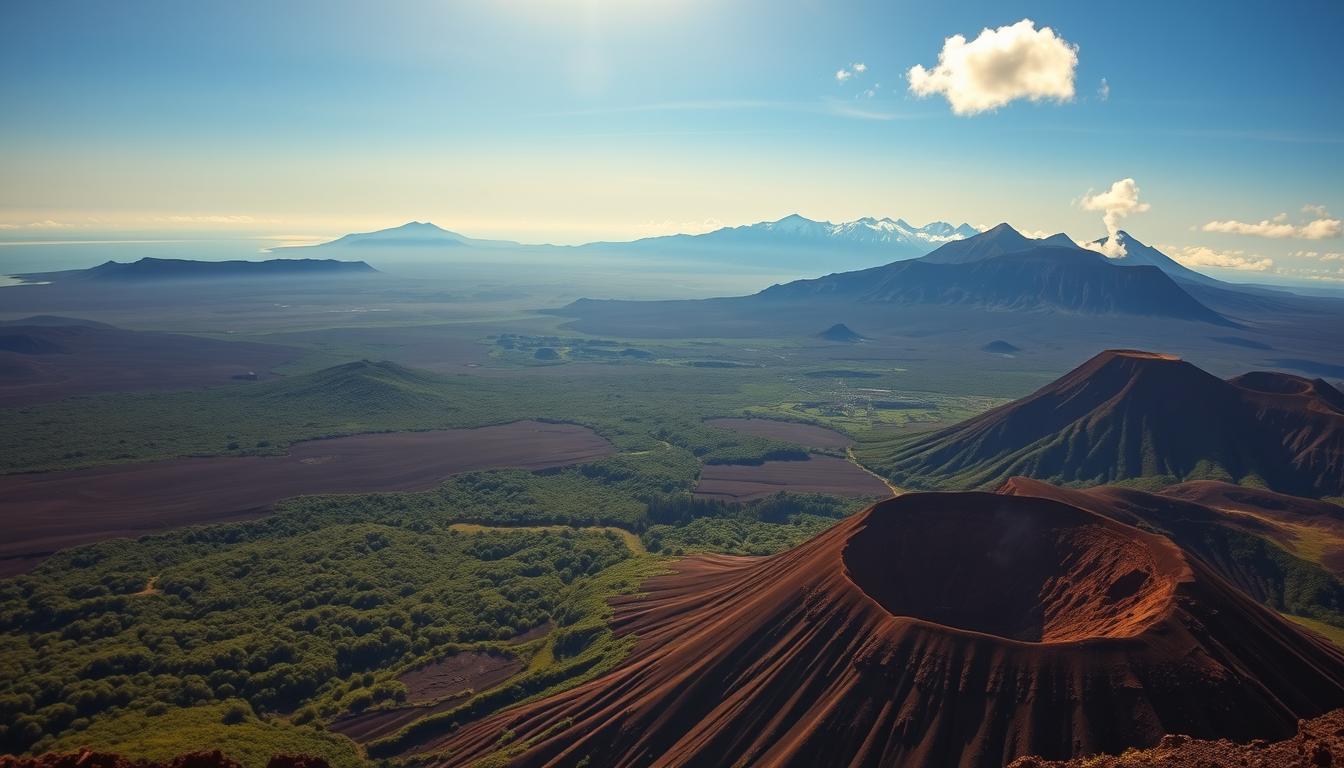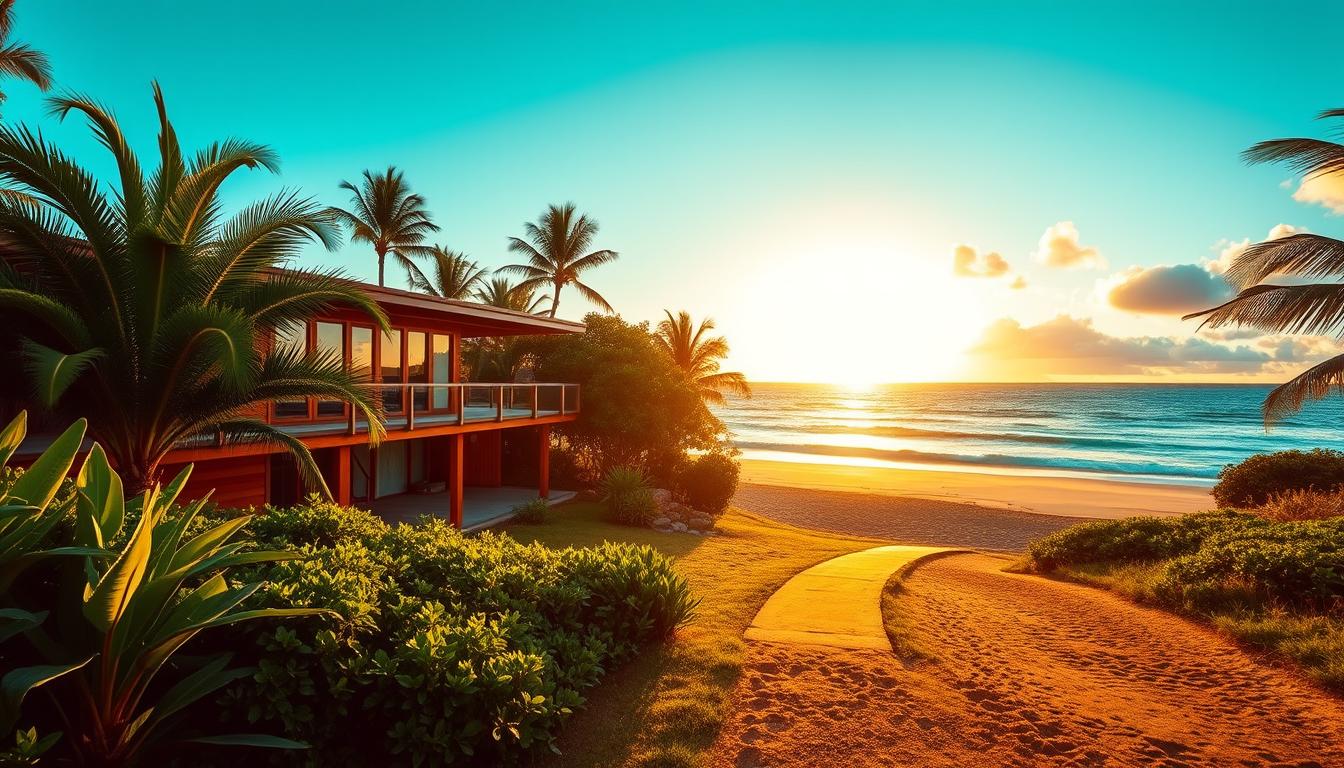Solo travel can be an uplifting and rewarding experience, offering the freedom to explore new places and strike up conversations with strangers. However, traveling alone can also be intimidating, especially in unfamiliar destinations. In this section, we will provide essential tips for ensuring a safe and memorable solo travel experience in Hawaii. From overcoming the fear of loneliness to staying safe in public places and protecting personal belongings, these tips will help solo travelers navigate the unique challenges of Hawaii.
Key Takeaways:
- Prepare before your trip by researching the safety measures and precautions recommended for solo travelers in Hawaii.
- Stay connected with family and friends back home and share your itinerary to keep them informed of your whereabouts.
- Trust your instincts and avoid risky situations or locations that make you feel uncomfortable.
- Stay aware of your surroundings, particularly in crowded areas or at night.
- Keep your personal belongings secure and be cautious of pickpockets or theft.
Embracing Solo Travel in Hawaii: A Liberating Experience
Solo travel in Hawaii offers a unique opportunity for self-discovery, adventure, and personal growth. Traveling alone allows individuals to embrace independence, make spontaneous decisions, and engage with both locals and fellow solo travelers. The freedom to explore at your own pace and immerse yourself in the beauty and culture of Hawaii is a truly liberating experience.
The Unique Appeal of Solo Journeys
There is something truly special about embarking on a journey without the need for companionship. Solo travel allows you to focus on your own interests and desires, free from the distractions or compromises that can arise when traveling with others. You have the power to create your own itinerary, discover hidden gems, and connect more deeply with the destinations you visit.
Moreover, solo travel provides an opportunity for personal growth and self-reflection. It allows you to step outside of your comfort zone, build resilience, and gain confidence in your ability to navigate unfamiliar surroundings. The solitude of solo travel can be a powerful catalyst for self-discovery, enabling you to reconnect with yourself and gain a deeper understanding of your own desires and aspirations.
Overcoming the Fear of Loneliness and Safety Concerns
While the idea of traveling alone may be enticing, it is not uncommon to feel apprehensive about the potential for loneliness and safety issues. It’s important to address these concerns so that you can fully embrace the solo travel experience in Hawaii.
One effective way to overcome the fear of loneliness is to engage with both locals and fellow solo travelers. Hawaii is known for its warm and welcoming culture, making it easy to strike up conversations and form meaningful connections. Participating in group activities, such as guided tours or adventure excursions, can also offer opportunities to meet like-minded individuals.
When it comes to safety, it’s essential to be proactive and take necessary precautions. Research your destination before you travel and familiarize yourself with local laws, customs, and potential safety risks. Opt for well-lit and populated areas when exploring at night, and always trust your instincts. Additionally, consider informing a trusted friend or family member of your travel plans and regularly check in with them.
By embracing solo travel and addressing any fears or concerns, you can embark on a transformative journey in Hawaii, filled with adventure, self-discovery, and unforgettable experiences.
Choosing the Right Hawaiian Island for Your Solo Adventure
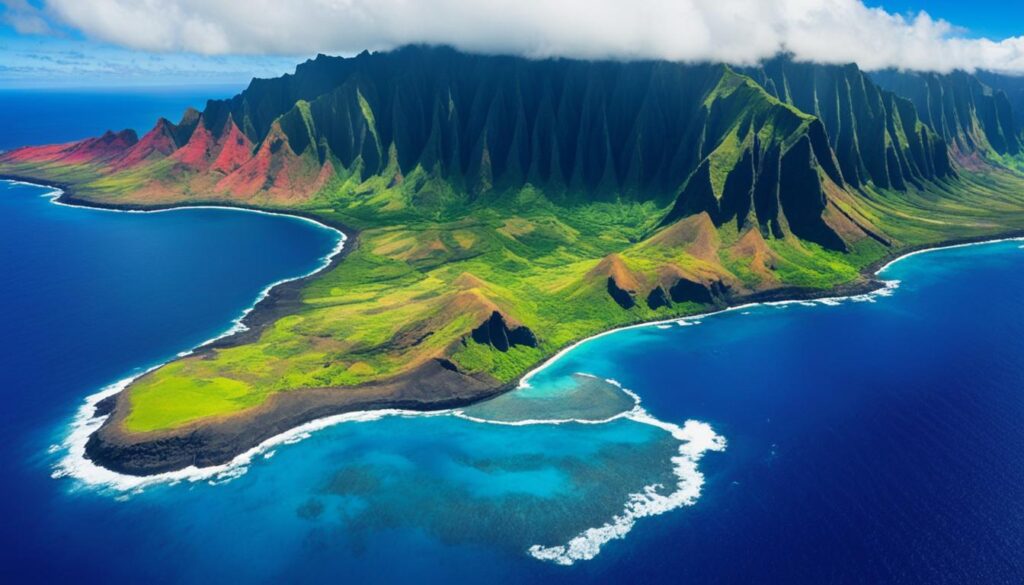
Hawaii is composed of several stunning islands, each offering a unique experience for solo travelers. In this section, we will guide solo travelers in choosing the right Hawaiian island that aligns with their interests and preferences. Whether you’re seeking active adventures, vibrant nightlife and cultural experiences, thrilling outdoor activities, or secluded tranquility, there is an island in Hawaii that will cater to your solo travel desires.
Maui: The Ultimate Destination for Active Solo Travelers
If you’re an active solo traveler looking for adventure and exploration, Maui is the perfect choice. This island offers a plethora of outdoor activities, including hiking through lush rainforests, snorkeling in crystal clear waters, and experiencing the thrill of surfing on world-renowned beaches. Don’t forget to witness the breathtaking sunrise atop the Haleakala volcano for an unforgettable solo travel experience.
Oahu: A Blend of Nightlife and Culture for the Individual Explorer
Oahu is ideal for solo travelers who crave a vibrant mix of nightlife and cultural experiences. Explore the bustling streets of Honolulu, where you can immerse yourself in the diverse local culture, visit historical landmarks like Pearl Harbor, and indulge in delicious Hawaiian cuisine. After dark, experience the energetic nightlife scene, with live music, bustling bars, and exciting dance clubs that cater to solo travelers looking for a memorable evening.
Kauai: An Adventurer’s Paradise for Solo Thrill-Seekers
If you’re a solo traveler seeking thrills and excitement, Kauai is the ultimate playground. This island is renowned for its dramatic landscapes, rugged mountains, and stunning waterfalls. Embark on thrilling adventures such as ziplining through lush canopies, hiking the famous Kalalau Trail along the breathtaking Na Pali Coast, and kayaking along the Wailua River. Kauai will surely satisfy your adventurous spirit and provide unforgettable solo travel memories.
Molokai: A Secluded Retreat for Personal Rejuvenation
If you’re looking for a secluded retreat to relax and rejuvenate during your solo travel journey, Molokai is the perfect island for you. Experience a sense of tranquility as you explore the untouched natural beauty of this island. Immerse yourself in the local culture by visiting historic sites, indulging in traditional Hawaiian music and dance, and connecting with the welcoming community. Molokai offers a peaceful getaway where you can unwind, reflect, and reconnect with yourself during your solo adventure.
↑ Image depicts a picturesque beach, representing the stunning natural beauty of Hawaii.
Understanding and Respecting Local Hawaiian Culture and Laws
Hawaii is renowned for its breathtaking natural beauty, but it is also home to a rich and vibrant cultural heritage that visitors should understand and respect. To fully immerse yourself in the Hawaiian experience and ensure a harmonious interaction with locals, it is important to familiarize yourself with the history, traditions, and values of Hawaiian culture.
Hawaiian culture is deeply rooted in the principles of aloha, which encompasses love, respect, and compassion towards others. Respect for the land, or ‘aina, and the ocean, or kai, is a fundamental aspect of Hawaiian culture and is reflected in the traditional practices and customs of the islands.
When visiting Hawaii, it is crucial to follow Hawaiian laws and regulations to maintain the preservation of the islands and show respect for the local community. Familiarize yourself with basic guidelines such as the proper disposal of trash and the preservation of natural resources. By doing so, you contribute to the preservation of Hawaii’s pristine environment for future generations to enjoy.
Cultural etiquette in Hawaii is also essential to ensure a positive and respectful interaction with the locals. Here are some practical tips to keep in mind during your visit:
- Learn and use common Hawaiian greetings such as ‘Aloha’ and ‘Mahalo’ (thank you).
- Remove your shoes when entering someone’s home or any sacred places like temples or historical sites.
- Ask for permission before taking photographs of people or sacred sites.
- Respect the privacy and personal space of others.
- Be mindful of your noise level when visiting residential areas or quiet places.
- Avoid touching or disturbing marine life and natural resources while snorkeling or participating in water activities.
- Support local businesses and artisans by purchasing authentic Hawaiian products and crafts.
- Learn about and appreciate the significance of hula, ukulele, lei-making, and other traditional arts.
- Be open-minded and receptive to learning about different cultural practices and beliefs.
By understanding and respecting Hawaiian culture, following local laws, and practicing cultural etiquette in Hawaii, you can have a more meaningful and enriching experience during your solo journey. Let us now delve into the topic of solo female travel safety in Hawaii, where we discuss strategies to ensure a safe and enjoyable trip for women traveling alone.
Solo Female Travel Safety in Hawaii
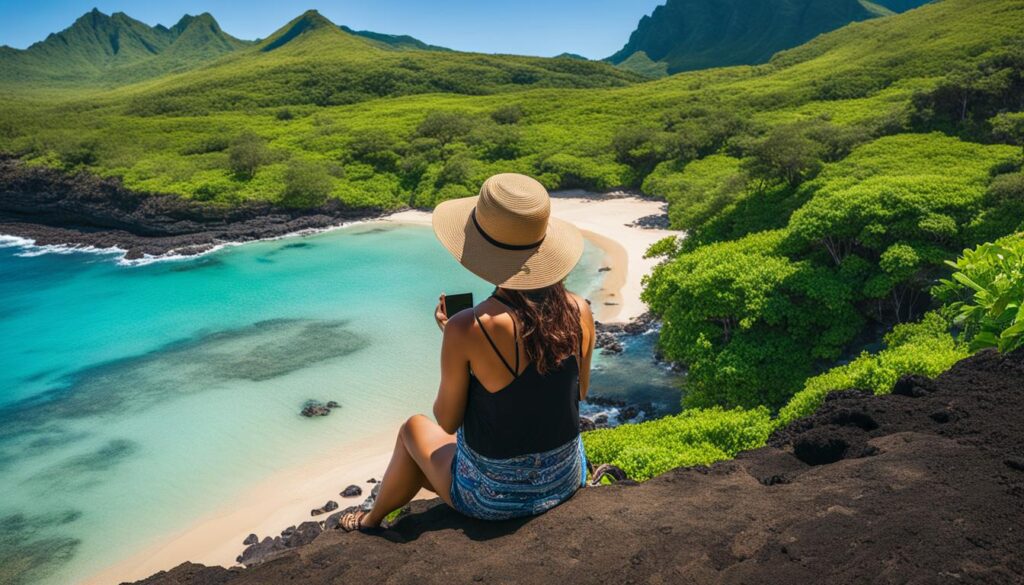
When it comes to solo travel, it’s important for women to prioritize their safety. Hawaii is a popular destination for solo female travelers, and with the right precautions, it can be a safe and enjoyable experience. In this section, we will provide essential safety tips specifically tailored for solo women travelers in Hawaii.
Staying Safe in Public Places: Tips for Solo Women Travelers
Whether you’re exploring the beautiful beaches or vibrant city streets of Hawaii, it’s crucial to prioritize your safety. Here are some tips to help solo women travelers stay safe in public places:
- Be aware of your surroundings and trust your instincts. If a situation feels uncomfortable, remove yourself from it.
- Stick to well-lit areas, especially at night, and avoid secluded or empty places.
- Inform someone about your travel plans and itinerary before you go out.
- Avoid excessive alcohol consumption, as it can impair judgment and make you more vulnerable.
- Consider taking self-defense classes before your trip to build confidence and learn essential techniques.
Protecting Valuables and Personal Information: A Solo Traveler’s Guide
Protecting your valuables and personal information is crucial while traveling alone. Here are some tips to ensure their safety:
- Carry a secure bag or backpack and keep it in your possession at all times.
- Avoid displaying expensive jewelry or electronics that may attract unwanted attention.
- Carry only the necessary documents and cards, leaving the rest stored securely at your accommodation.
- Consider using a travel lock or portable safe to secure your belongings in your accommodation.
- Be cautious when sharing personal information, especially with strangers or on public Wi-Fi networks.
To stay safe while traveling alone in Hawaii, it’s important to be vigilant, trust your instincts, and take precautions to protect yourself and your belongings. By following these safety tips, solo female travelers can enjoy their trip to Hawaii with peace of mind.
Smart Accommodation Choices for Solo Travelers in Hawaii
Accommodation choices can significantly impact the overall solo travel experience. As a solo traveler in Hawaii, it’s important to choose accommodations that cater to your specific needs and preferences. Whether you’re looking for budget-friendly options or luxurious resorts, Hawaii offers a variety of choices that will cater to your requirements.
Comparing Inclusive Resorts vs. Budget-Friendly Options
When it comes to accommodations for solo travelers in Hawaii, there are two main options to consider: inclusive resorts and budget-friendly alternatives.
Inclusive resorts provide a comprehensive experience with various amenities, such as pools, restaurants, and entertainment options. While these resorts tend to be more expensive, they often offer a wide range of activities and services that can enhance your solo travel experience. Additionally, inclusive resorts provide opportunities for socializing and meeting other travelers, making them a great choice if you’re looking for a more vibrant and interactive stay.
On the other hand, budget-friendly options provide a more cost-effective alternative for solo travelers. These accommodations include hostels, guesthouses, and affordable hotels that offer the basic necessities without compromising comfort. Budget-friendly options allow you to save money on accommodations, giving you more flexibility to allocate your budget towards other aspects of your solo trip, such as activities and dining.
The Strategic Booking: Starting Simple and Ending with Luxury
For solo travelers looking to combine simplicity with a touch of luxury, strategic booking is key. Start your solo trip with simpler and budget-friendly accommodations in the beginning, and gradually transition to more luxurious resorts as you progress.
By starting your trip with simpler accommodations, you can get acclimated to the area and explore different neighborhoods without breaking the bank. This allows you to experience the authentic local culture and immerse yourself fully in the destination. As you gain confidence and a better understanding of the area, you can then treat yourself to luxury resorts for a more indulgent and pampered experience towards the end of your trip.
Strategic booking not only helps you manage your budget effectively but also ensures that you get the most out of your solo travel experience by balancing cost-efficiency and luxury.
Guided Tours and Activities: Making Solo Travel Enjoyable
Participating in guided tours and group activities is an excellent way for solo travelers to enhance their experience and potentially meet fellow adventurers. Organized excursions offer opportunities for companionship and connection, allowing solo travelers to share their journey with like-minded individuals. Whether you’re interested in exploring the stunning landscapes of Hawaii or immersing yourself in the local culture, there are a variety of tours and activities available that cater to solo travelers.
Finding Companionship through Organized Excursions
Guided tours provide a structured and informative way to explore Hawaii’s attractions while surrounded by other travelers. Joining a tour allows you to meet people with similar interests and provides a built-in social setting for forging new friendships. From sightseeing tours of iconic landmarks to adventure activities like snorkeling or hiking, there are plenty of options to choose from based on your preferences.
Connecting with Other Travelers in Hiking and Adventure Groups
If you prefer a more active and immersive experience, consider joining hiking or adventure groups. These specialized groups bring together individuals who share a love for outdoor exploration and adrenaline-fueled activities. Hiking through lush rainforests, kayaking along picturesque coastlines, or embarking on thrilling zip line adventures are just a few examples of the activities you can enjoy while connecting with fellow travelers. These group experiences not only provide an opportunity to make friends but also ensure a safe and enjoyable journey with experienced guides.
Remember to research and book your tours and group activities in advance to secure your spot and avoid disappointment. Check online platforms and travel websites that offer recommendations and reviews for popular tours and group activities in Hawaii. It’s also a good idea to reach out to fellow travelers through online forums or social media groups dedicated to solo travel or Hawaii adventure activities. By planning and participating in guided tours and group activities, your solo travel experience in Hawaii is sure to be an enjoyable and memorable one.
Weather Patterns in Hawaii: Planning Around the Seasons
Hawaii’s weather patterns play a crucial role in designing an enjoyable solo travel itinerary. Understanding the climate variations across the islands is essential for planning outdoor activities and ensuring a comfortable experience. Additionally, being aware of hurricane seasons is crucial to avoid potential travel disruptions and stay safe during your solo adventure.
Avoiding Hurricane Season: The Best Times to Visit
When planning your solo trip to Hawaii, it’s important to avoid the hurricane season to minimize any potential risks. The hurricane season in Hawaii typically runs from June to November, with a higher probability of storms and heavy rainfall. To ensure a smooth and uninterrupted travel experience, it is advisable to plan your visit outside this period.
For the best weather conditions and fewer chances of encountering hurricanes, consider visiting Hawaii during the dry season, which falls from April to October. During this time, the islands experience less rainfall and more sunshine, providing ideal conditions for outdoor adventures and exploration.
However, it’s important to note that weather patterns can vary across the islands, and microclimates exist within specific regions. It’s always recommended to check the local weather forecasts for the specific island you plan to visit to make informed decisions about your travel dates.
Anticipating Rainfall and Temperature for Comfortable Exploration
Although Hawaii is renowned for its sunny weather, the islands do experience occasional rainfall throughout the year. It’s wise to anticipate and prepare for some precipitation during your solo trip. While rain showers may occur at any time, they are generally brief and followed by sunshine.
To ensure comfortable exploration during your solo adventure, pack lightweight, quick-drying clothing that will keep you comfortable even in wet conditions. Don’t forget to bring a rain jacket or umbrella to protect yourself from unexpected showers.
Additionally, Hawaii’s temperatures can vary depending on the season and location. The coastal regions of the islands typically experience milder temperatures compared to the higher elevations. Keep this in mind when planning your activities and pack accordingly, including sunscreen and hats for sun protection.
By understanding and anticipating Hawaii’s weather patterns, you can plan your solo trip around the seasons, avoiding hurricane season and ensuring a comfortable exploration experience. Make the most of the stunning landscapes and outdoor activities the islands have to offer while staying safe and prepared for any weather conditions that may arise.
Transportation Tips: Navigating Hawaii Solo with Ease
Navigating transportation options can be a crucial aspect of solo travel in Hawaii. Whether you plan to explore multiple islands or stay on one, understanding the available transportation choices is essential for a smooth and enjoyable trip.
Rental Cars vs. Public Transport: Weighing Your Options
When it comes to getting around Hawaii, you have two main options: renting a car or utilizing public transport. Each choice has its advantages and considerations that may influence your decision.
Renting Cars:
Renting a car grants you the freedom to explore the islands at your own pace. It allows you to easily access remote locations and off-the-beaten-path attractions. Additionally, you can enjoy the convenience of storing your belongings securely within the vehicle. However, there are a few factors to consider:
- Rental Costs: Car rentals in Hawaii can be quite expensive, especially during peak travel seasons. It’s advisable to book in advance to secure affordable rates.
- Parking: In popular tourist areas and cities, parking can be limited and expensive. Ensure you factor in these costs when budgeting for your trip.
- Traffic: Depending on the time of day and specific locations, traffic can be congested on some Hawaiian islands. Plan your itinerary accordingly to avoid potential delays.
Public Transport:
Utilizing public transport, such as buses or shuttles, is a cost-effective option for solo travelers in Hawaii. The islands offer well-connected transportation networks. Here are a few considerations for using public transport:
- Affordability: Public transport is generally more budget-friendly compared to renting a car, especially if you’re primarily staying in urban areas.
- Schedule: Buses and shuttles operate on fixed schedules, so you’ll need to plan your activities accordingly. It’s essential to be mindful of the last departure times if you’re planning on exploring until evening.
- Accessibility: While public transport is available on most islands, it may be less convenient or limited in remote areas or less touristy destinations.
Ultimately, the best choice between renting a car and using public transport depends on your travel preferences, budget, and itinerary. Consider the factors mentioned above to determine which option aligns with your needs.
Ridesharing and Taxi Apps: Traveling with Assurance
In addition to rental cars and public transport, ridesharing and taxi apps offer convenient and reliable transportation options for solo travelers in Hawaii. These apps provide the following benefits:
- Convenience: With ridesharing and taxi apps, you can easily request a ride from wherever you are. This flexibility is especially valuable when traveling alone.
- Safety: Most ridesharing apps provide features like driver ratings, real-time GPS tracking, and trip sharing with loved ones, ensuring a safer travel experience.
- Local Knowledge: Rideshare drivers and taxi drivers often have a wealth of local knowledge and can provide useful information and recommendations about the area.
When using ridesharing and taxi apps, it’s advisable to check the availability and coverage area on the specific Hawaiian island you’re visiting. While these services are typically readily available in urban areas, the options may be more limited in remote or less touristy locations.
By considering the rental car and public transport options and utilizing ridesharing and taxi apps strategically, solo travelers can navigate the beautiful Hawaiian islands with ease, ensuring a seamless and stress-free transportation experience.
Financial Planning for a Solo Trip to Hawaii
When embarking on a solo trip to Hawaii, it is crucial to have a solid financial plan in place. By budgeting wisely, solo travelers can make the most of their experience without breaking the bank. In this section, we will guide you through essential financial planning strategies that will ensure you have a fantastic and affordable adventure in Hawaii.
Budgeting for Accommodations: Where to Save and Splurge
Accommodations can make up a significant portion of your travel expenses, so it’s important to carefully consider your options. To save money without compromising comfort, consider staying at budget-friendly accommodations like hostels or rental apartments. These options often provide adequate amenities while offering reasonable rates. On the other hand, if you want to splurge and treat yourself to luxury, consider staying at all-inclusive resorts that provide a range of services and activities.
Cost-Saving Tips: Food, Tours, and Free Activities
When it comes to saving money on food, consider eating at local restaurants or trying food trucks that offer delicious meals at affordable prices. You can also stock up on snacks and drinks from local grocery stores to keep your expenses in check. Additionally, for tours and activities, look for promotional deals or discounted packages, especially during off-peak seasons. Lastly, take advantage of the abundance of free activities in Hawaii, such as exploring public parks, beaches, and hiking trails. These activities allow you to immerse yourself in the natural beauty of the islands without spending a dime.
FAQ
What are some safety tips for solo travelers in Hawaii?
Solo travelers in Hawaii can ensure their safety by staying aware of their surroundings, avoiding unfamiliar or poorly lit areas at night, and keeping personal belongings secure. It is also advisable to inform someone of your itinerary and regularly check in with them.
What are the unique benefits of solo travel in Hawaii?
Solo travel in Hawaii offers the opportunity for self-discovery, adventure, and personal growth. Traveling alone allows individuals to embrace independence, make spontaneous decisions, and engage with both locals and fellow solo travelers.
How can I overcome the fear of loneliness and address safety concerns while traveling alone in Hawaii?
Overcoming the fear of loneliness can be achieved by staying open to new experiences, joining group activities, and connecting with other travelers. As for safety concerns, it is essential to follow common-sense safety practices, research the destinations beforehand, and trust your instincts.
Which Hawaiian island is best for solo travelers?
Each Hawaiian island has its own charm and attractions for solo travelers. Maui offers active adventures, Oahu provides a blend of nightlife and culture, Kauai is an adventurer’s paradise, and Molokai offers a secluded retreat for personal rejuvenation.
How can I understand and respect Hawaiian culture and laws during my solo trip?
Understanding Hawaiian culture involves learning about its history, traditions, and values. It is important to respect local customs and follow the laws of the islands. Practicing cultural etiquette, such as removing your shoes before entering someone’s home, is also crucial.
What safety tips should solo female travelers keep in mind while in Hawaii?
Solo female travelers in Hawaii should prioritize staying safe in public places by being aware of their surroundings, dressing modestly, and avoiding excessive alcohol consumption. They should also take precautions to protect their valuables and personal information while traveling alone.
What are some smart accommodation choices for solo travelers in Hawaii?
Solo travelers in Hawaii can choose between inclusive resorts and budget-friendly alternatives based on their preferences and budget. It is also wise to employ strategic booking strategies that allow for simplicity at the beginning of the trip and luxury at the end, if desired.
How can I make solo travel enjoyable by participating in guided tours and activities?
Solo travelers can enhance their experience and potentially meet fellow adventurers by participating in guided tours and group activities. They can find companionship through organized excursions and connect with other travelers in hiking and adventure groups.
What is the best time to visit Hawaii in terms of weather patterns?
It is advisable to avoid hurricane season when planning a solo trip to Hawaii. Different islands may have slightly varying weather patterns, but generally, the best time to visit is during the dry season, which varies depending on the specific island.
What are some transportation tips for solo travelers in Hawaii?
Solo travelers in Hawaii can choose between renting cars and utilizing public transport based on their preferences and budget. They can also use ridesharing and taxi apps to travel with ease and assurance throughout the islands.
How can I plan my finances for a solo trip to Hawaii?
It is essential to plan your finances for a solo trip to Hawaii by considering budgeting strategies for accommodations, such as areas to save and splurge. Additionally, there are cost-saving tips available for food, tours, and free activities that allow solo travelers to make the most of their budget while exploring the islands.

Scott Sweeney is the creator of Virtual Hawaii 360. Scott is a professional marketer and a lifelong Hawaii enthusiast. Scott splits time between Oahu and Dayton, Ohio. In addition to his marketing endevours, he is also a published Ukulele musician.

